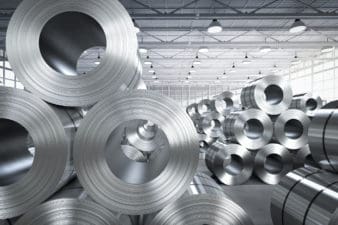This week Morgan Stanley said that a “lack of inflation, emerging financial stability in Europe, and robust economic activity in the U.S. are all bearish for gold.” With prices already down 33% from their highs, it’s troubling to see so many bearish warnings coming from Wall Street’s top analysts.
In times of trouble, your best bet is to stick with gold miners that have healthy balance sheets, increasing reserve volumes, low extraction costs, and ample cash flows. Based on these qualifications, which miners should you buy and which are best avoided in today’s environment?
Which miners have manageable debt loads?
The ability of a miner to service its debt is one of the most important metrics an investor can look at when analyzing gold miners. Not only can interest payments eat into profits, but restrictive debt covenants can force companies to sell valuable assets at fire-sale prices to meet obligations. Already this year, U.S.-based gold miner Allied Nevada Gold Corp. filed for bankruptcy protection, citing a crippling debt load amid weaker metal prices.
Whereas Barrick Gold Corp. (TSX:ABX)(NYSE:ABX), Kinross Gold Corp. (TSX:K)(NYSE:KGC), and IAMGOLD Corp. (TSX:IMG)(NYSE:IAG) have debt-to-capitalization levels above 70%, both Goldcorp Inc. (TSX:G)(NYSE:GG) and Agnico Eagle Mines Ltd. (TSX:AEM)(NYSE:AEM) have much more manageable levels near 20%. Both Yamana Gold Inc. (TSX:YRI)(NYSE:AUY) and Newmont Mining Corp. (NYSE:NEM) stand at around 55%.
Not only do low debt levels lower the risk of bankruptcy, but it’s also an indicator of management’s discipline. Goldcorp’s low debt levels resulted from avoiding a bidding war with other miners over certain high-priced properties for sale. Companies with attractive balance sheets show signs of past prowess and signal future success.
Which miners are growing reserves?
When looking at the larger miners, only Yamana and Agnico were able to increase their reserves last year. Yamana’s gold reserves increased by 20%, while Agnico’s increased by 18%. Barrick, Newmont, Goldcorp, Kinross, and IAMGOLD, meanwhile, all saw reserves fall anywhere from 5-20%.
While some of the companies listed have projects in the pipeline that should add production potential, declining reserves and a lack of new discoveries are troublesome long term.
Which miners are controlling costs?
All-in sustaining costs (AISC) is one of the better metrics for comparing each miners efficiency at producing gold. It includes cash costs, sustaining capital expenditures, exploration expenses, and general and administrative expenses. The average AISC for the seven companies mentioned is guided to be $945 an ounce.
IAMGOLD is guiding for the highest AISC at $1,125 per ounce. Kinross comes in next at $1,050, then Newmont at $990. At the bottom of the cost curve are Goldcorp at $900, Agnico at $880, and Barrick at $875. Yamana has the most impressive cost containment levels, guiding for AISC of only $805 an ounce.
Most miners have been cutting production costs since gold prices collapsed in 2013, but clearly some are doing a better job than others.
Which miners have the best cash flow potential?
Reducing costs has helped many miners generate positive free cash flow despite lower metal prices. All of the companies mentioned, except IAMGOLD, are expected to have a positive free cash flow yield over the next few years.
Goldcorp, Barrick, and Newmont lead the way with expected free cash flow yields next year of roughly 5%. While this doesn’t appear incredibly attractive, it beats the results from the previous downturn by a landslide.
Which to buy and which to avoid?
In total, it looks like Goldcorp and Agnico are the best positioned. Both have industry low debt levels and are near the bottom of the cost curve. And while Agnico grew its reserves last year and Goldcorp did not, Goldcorp does have a higher expected free cash flow yield. While the ultimate choice of investment is up to you, it would be wise to narrow your decision down to one of these two companies.





